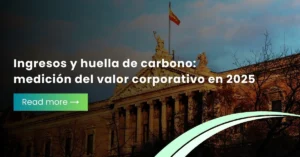Durante décadas, el estado financiero de una empresa fue la...

Latest News & Updates
Think Beyond Today. Invest in a Sustainable Tomorrow with SAMESG® Reporting



Abu Dhabi has launched its first-ever Climate Change Adaptation Plan for the Environment Sector (2025–2050), a landmark initiative by the Environment Agency, Abu Dhabi (EAD) to proactively protect the emirate’s vital natural resources from escalating climate impacts. Launched by the EAD on July 23, 2025, this pioneering plan is a testament to Abu Dhabi’s commitment to building resilience and safeguarding its environment for the future, reinforcing its leadership in regional climate action and marking a significant stride in environmental governance. As the first dedicated adaptation strategy for the emirate’s environment sector, it sets a clear, long-term commitment to climate resilience.
The EAD’s strategic goals for the plan are focused:
This dynamic plan emphasizes continuous review and updates based on evolving scientific findings.
This strategic initiative will profoundly enhance how Abu Dhabi manages and protects its natural assets, leading to crucial positive impacts:
The plan outlines 142 adaptation actions by 2050, with 86 high-priority projects slated for the next five years. These actions integrate diverse solutions, including:
This sector-specific plan is part of a broader, emirate-wide adaptation strategy, signaling a unified approach to comprehensive climate resilience across all critical sectors in Abu Dhabi.
Abu Dhabi’s launch of its first Climate Adaptation Plan for the Environment Sector marks a transformative moment, cementing proactive adaptation as central to environmental management. While implementation presents complexities, this pioneering initiative offers a powerful opportunity to enhance natural capital, secure vital resources, and bolster long-term resilience. By adopting these comprehensive, science-driven measures, Abu Dhabi not only fulfills its environmental obligations but also fosters trust, attracts green investments, and secures a more thriving future for its natural heritage.
Share
Read Our Resources
Explore more resources



is at
Meet us at SFF 2025
Booth: 4G40, Hall 4